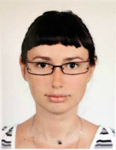Abstract
The use of modern information technologies, including distance learning, significantly strengthened the traditional approaches to the educational process in higher education institutions. On the one hand, the reason for this is the rapid development of information and communication technologies, and as a consequence, appearance of new modern pedagogical approaches to conducting lectures, practical and laboratory trainings. On the other hand, students also have changed. Under present conditions, they have a number of personal qualities that were not inherent to pupils and students of previous years. The article argues the use of distance learning technologies and the possibilities of modern specialists trained in educational measurements in the field of distance learning.References
Про затвердження Положення про дистанційне навчання: Наказ МОН України від 25 квітня 2013 р., №466 [Електронний ресурс] / Законодавство України. — Режим доступу : http://zakon4.rada.gov.ua/laws/show/z0703-13.
Traditionalists, Baby Boomers, Generation X, Generation Y (and Generation Z). Working Together [Електронний ресурс]. — Режим доступу: http://www.un.org/staffdevelopment/pdf/Designing%20Recruitment,%20Selection%20&%20Talent%20Management%20Model%20tailored%20to%20meet%20UNJSPF%27s%20Business%20Development%20Needs.pdf.
Digital Natives, Digital Immigrants By Marc Prensky [Електронний ресурс]. – Режим доступу : http://www.nnstoy.org/download/technology/Digital%20Natives%20-%20Digital%20Immigrants.pdf.
How Net Generation Students Work [Електронний ресурс]. — Режим доступу : http://people.howstuffworks.com/how-net-generation-students-work1.htm.
Influence of generations’ traits on teaching and learning in an open distant learning (ODL) environment [Електронний ресурс]. — Режим доступу : http://uir.unisa.ac.za/bitstream/handle/10500/8756/sithole_k_ODL_067_2012.pdf?sequence=1.
Oblinger, D. G., Oblinger, J. L., eds., 2005: Educating the Net Generation. EDUCAUSE ,Washington, D.C.,2005, 264p. ISBN 0-9672853-2-1.
Tapscott, Don, 2009: Grown up digital: how the net generation is changing your world.Mc Graw Hill, New York, 2009, 368 p. ISBN: 978-0-07-150863-6.
Дистанційне навчання в післядипломній педагогічній освіті (в схемах і таблицях)/ [ Олійник В. В., Гравіт В. О., Антощук С. В. та ін.]; за ред. В. В. Олійника. — К. : Міленіум, 2003. — 76 с.
Чернілевський Д. В. Дистанційна освіта та її інформаційні технології : навчальний посібник / Д. В. Чернілевський. — К. : Видавництво університету «Україна»; Міленіум, 2006. — 380 с.
Трохименко В. Дистанційне навчання педагогічних працівників: досвід і проблеми // Післядипломна освіта в Україні. — 2004. — С. 29–32.
REFERENCES (TRANSLATED AND TRANSLITERATED)
On approval of distance learning: Order of Ministry of Education and Science of Ukraine from 25 April 2013 , №466[online]/. — Available from : http://zakon4.rada.gov.ua/laws/show/z0703-13 (in Ukrainian).
Traditionalists, Baby Boomers, Generation X, Generation Y (and Generation Z). Working Together [online]. — Available from : http://www.un.org/staffdevelopment/pdf/Designing%20Recruitment,%20Selection%20&%20Talent%20Management%20Model%20tailored%20to%20meet%20UNJSPF%27s%20Business%20Development%20Needs.pdf. (in English)
Digital Natives, Digital Immigrants By Marc Prensky [online]. — Available from : http://www.nnstoy.org/download/technology/Digital%20Natives%20-%20Digital%20Immigrants.pdf. (in English)
How Net Generation Students Work[online]. — Available from : http://people.howstuffworks.com/how-net-generation-students-work1.htm. (in English)
Influence of generations’ traits on teaching and learning in an open distant learning (ODL) environment [online]. — Available from : http://uir.unisa.ac.za/bitstream/handle/10500/8756/sithole_k_ODL_067_2012.pdf?sequence=1. (in English)
Oblinger, D. G., Oblinger, J. L., eds., 2005: Educating the Net Generation. EDUCAUSE ,Washington, D.C., 2005, 264 p. ISBN 0-9672853-2-1. (in English)
Tapscott, Don, 2009: Grown up digital: how the net generation is changing your world.Mc Graw Hill, New York, 2009, 368 p. ISBN: 978-0-07-150863-6. (in English)
Distance learning for postgraduate teacher education (in charts and tables)/ [ Olijnyk V. V., Gravit V. О., Antoschyk S. V.,etc.]; edited by V. V. Olijnyk. — Kiev : Milenium, 2003. —– 76 p. (in Ukrainian).
Chernilevsky D.V. Distance Education and Information Technology: Manual / D.V.. Chernilevsky. — Кiev. : Publisher University «Ukraine»; Milenium, 2006. — 380 p. (in Ukrainian).
Trohymenko V. Distance Learning for teaching staff: experience and problems // Postgraduate education in Ukraine. — 2004. — P. 29–32. (in Ukrainian).
Authors who publish in this journal agree to the following terms:
- Authors hold copyright immediately after publication of their works and retain publishing rights without any restrictions.
- The copyright commencement date complies the publication date of the issue, where the article is included in.
Content Licensing
- Authors grant the journal a right of the first publication of the work under a Creative Commons Attribution-NonCommercial-ShareAlike 4.0 International License (CC BY-NC-SA 4.0) that allows others freely to read, download, copy and print submissions, search content and link to published articles, disseminate their full text and use them for any legitimate non-commercial purposes (i.e. educational or scientific) with the mandatory reference to the article’s authors and initial publication in this journal.
- Original published articles cannot be used by users (exept authors) for commercial purposes or distributed by third-party intermediary organizations for a fee.
Deposit Policy
- Authors are permitted and encouraged to post their work online (e.g., in institutional repositories or on their website) during the editorial process, as it can lead to productive exchanges, as well as earlier and greater citation of published work (see this journal’s registered deposit policy at Sherpa/Romeo directory).
- Authors are able to enter into separate, additional contractual arrangements for the non-exclusive distribution of the journal's published version of the work (e.g., post it to an institutional repository or publish it in a book), with an acknowledgement of its initial publication in this journal.
- Post-print (post-refereeing manuscript version) and publisher's PDF-version self-archiving is allowed.
- Archiving the pre-print (pre-refereeing manuscript version) not allowed.

